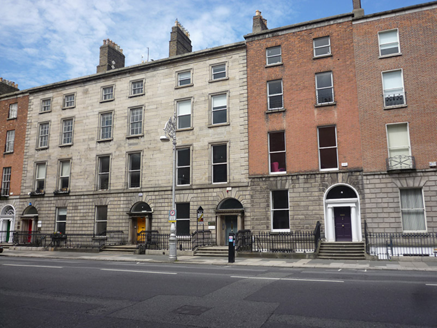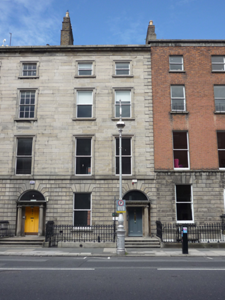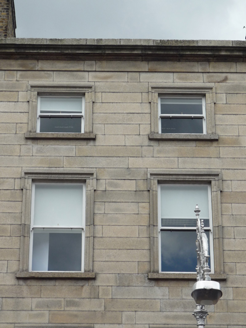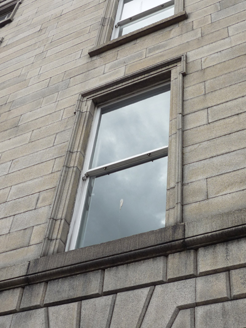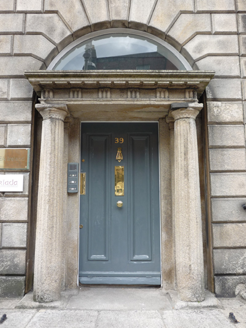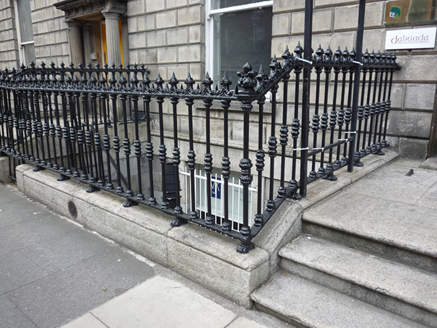Survey Data
Reg No
50930204
Rating
Regional
Categories of Special Interest
Architectural, Artistic
Original Use
House
In Use As
Office
Date
1835 - 1845
Coordinates
316464, 232895
Date Recorded
25/07/2015
Date Updated
--/--/--
Description
Terraced two-bay four-storey former townhouse over basement, built c. 1840, with two stage return to rear. Now in use as offices. M-profile slate roof, hipped to north, concealed by ashlar granite parapet with moulded cornice and coping, pair of brick chimneys to north and south party walls with clay pots, parapet gutters and cast-iron rainwater goods to rear. Coursed ashlar granite walling with rusticated quoins to north, rusticated granite walling to ground floor and coursed ashlar limestone walling to basement level, beneath granite stringcourse. Square-headed window openings with moulded lugged architraves, projecting granite sills and replacement one-over-one timber sash windows with horns. Block-and-start granite surround to basement window, with metal grille affixed to sill and replacement two-over-two timber sash. Round-headed opening to principal (east) elevation with projecting carved stone Ionic columned entablature, replacement plain glass fanlight and twin-panelled timber beaded muntin door with brass furniture. Granite entrance platform accessed via three granite steps. Original cast-iron railings to basement well affixed to granite plinth, recent steel steps to basement level. Coal-hole cover to pavement. Mews building to west rebuilt or remodelled and enlarged during recent decades, abutted to west by large office block. Mews building substantially extended to west, having gable-fronted two-storey block, with attic and carriage-arch, terminating Kingram Place.
Appraisal
This Georgian-style terraced former townhouse was built as one of a group of three with Nos. 37-8 (50930202-3). The principal façade is characterised by restrained detailing, vertical massing and well-balanced proportions. Coupled with the use of ashlar stone throughout, this group of three provides a contrast to the red brick elevations which dominate both sides of Fitzwilliam Place. Such variations between the groups of terraces is illustrative of the incremental nature of speculative development during this period of the nineteenth-century. The overall character of the terrace has been largely retained, despite the loss of historic fabric, including some original windows and fanlights. The boundary cast-iron railings and granite steps serve to further enhance the street setting. The integrity of the rear boundary walls and mews buildings has been degraded across some of the terrace, through a combination of incremental alterations and modern interventions.
